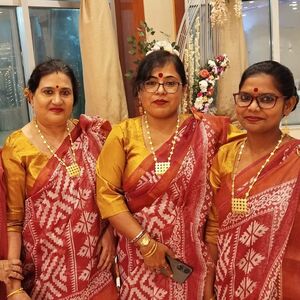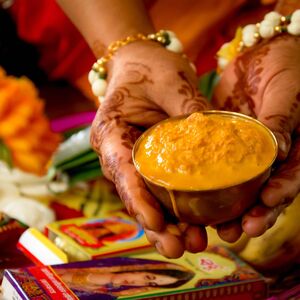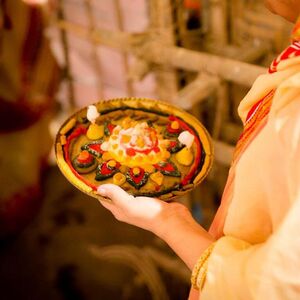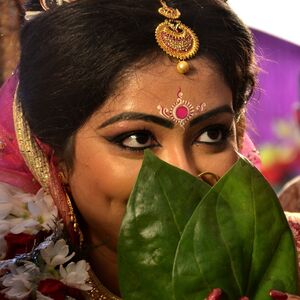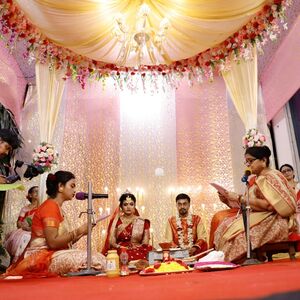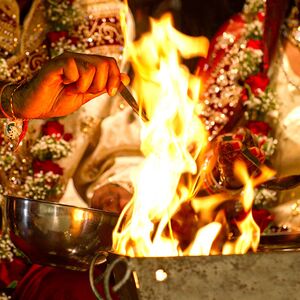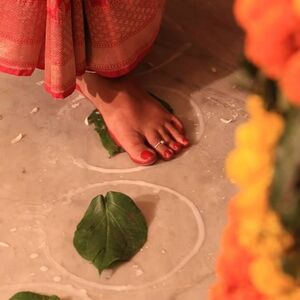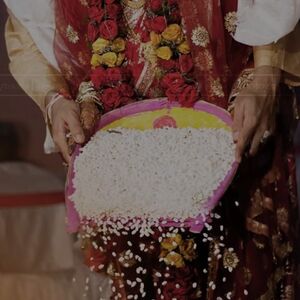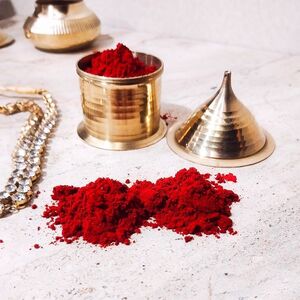
Shreyoshi & Subhro
Shreyoshi & Subhro
Rituals
We have decided to undergo a Vedic wedding, which would be conducted by female priestesses led by Dr. Reeta Bhattacharya , an advisor of Subhamastu, who performs Vedic marriages with her own team .You can read more about their work here: http://www.shubhamastu.org/
Hinduism speaks of sixteen reforms in human life. The most important of these sixteen reforms is the marriage reform. Marriage is a sacred bond, which not only unites two people, but also teaches a newly married couple to fulfill their responsibilities. The word marriage literally means bearing responsibility, which is essential to protect the family as well as the society.
A Hindu-Bengali marriage typically involves several rituals and ceremonies that blend traditional and cultural practices. Here’s a sequence of the events on that particular day:
Gayein Holud
Performed in the morning of the day of the marriage, where turmeric paste is applied to the bride and groom by their families to purify and beautify them for the wedding.
Boranugomon
In the evening the bride groom with his family and friends arrives at the marriage venue where the bride and the family await them. The groom comes to the bride’s place usually in a car decorated with flowers. The next step is the Jamai boron - the mother of the bride along with few other married women receive the groom.
Saat Paak
After taking little rest and refreshments bride groom comes and stands at a particular place. Then the bride will come in a wooden seat carried by four male members from the bride’s family (usually brothers of the bride). Whilst being carried the bride covers her face with betel leaves. The bride circumambulates the groom seven times helped by the male relatives carrying her.
Subho Drishti
The bride removes the betel leaves – when both the bride and groom look at each other - this is known as the "Subha Drishti" and is usually performed under a cloth awning.
Mala Bodol
The exchange of garlands between the bride and groom for 3 times. After these events bride and groom holding their hands go to the marriage dais and sit together. There are non Vedic local rituals. Then begins the Vedic rituals which starts with offering prayers to various gods and goddesses and ancestor to seek blessings.
Panigrahana
There are three steps to this:
Panigrahana: Holding each other's palm
Ganthibandhan: Tying knots with their clothes. It symbolises a virtual bond that never lets them to be separated from each other.
Yagna / Homa: Here the bride and groom sit next to each other in front of the fire whilst the priest chants Vedic mantras which repeat when asked to and make ghee offerings to the fire.
Asmarohana
By stepping on the stone slab, this symbolizes overcoming all hurdles and negativity in life.
Saptapadi
The seven steps also known as the 7 vows or 7 pheras in Hindu weddings are taken to symbolize the bride and groom’s commitments to each other. The 7 vows are as follows-
1. Nourish each other
2. Be each other’s strength
3. Stay Faithful to each other
4. Love each other’s families
5. Care for children
6. Live a peaceful Life together
7. Maintain the Bond of Friendship
Saat Paak: The bride is carried by her brothers around the groom seven times, symbolizing their union.
Lajohome: Bride and groom offer puffed rice to sacrificial fire and seek blessings from both set of parents.
Soubhagya Tilak & Sindoor Daan
The bride applies tilak to groom's forehead and then the groom applies sindoor (vermilion) to the bride's forehead through to the parting of the hair. The main attraction of the ceremony is Sindoor Daan. The bride and groom are then declared husband and wife.
Ashirbaad and Prarthona
Ashirwad and prarthana: Both the parents give blessings to the newly married couple followed by showering the newly married couple with flower petals and good wishes - by all guests.
Samapti vachana: End of the ceremony – The priestesses pray for the couple.
